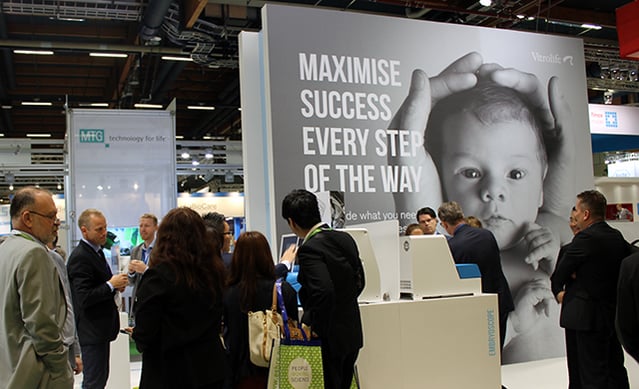Once again we can look back on the biggest event in the IVF community - the Annual Meeting of the European Society for Human Reproduction and Embryology. More than 10 000 people gathered in Helsinki, Finland to gain new scientific information, meet with colleagues and friends as well as explore the exhibit for new products and technologies. As usual, the scientific program is a mix of invited sessions, free communications, posters and sponsored activities. In this blog post we will make an attempt to summarise our reflections from this year’s ESHRE.
Increased knowledge in genetic testing
The increasing knowledge in genetics and the impact of this on different aspects of fertility treatment was quite prominent in this years’ program. Genetic testing or screening is becoming increasingly important and recent results have been discussed extensively. Increase in success rates but also information on developmental potential of embryos not considered euploid was discussed. The benefit of using time-lapse technology in (de)selection of embryos for genetic testing is another interesting aspect and one of the presentations showing this was by Zaninovic et al. (O-160) who, in a cohort of >21,000 embryos showed a correlation between abnormal cleavage, ploidy status and developmental potential.
Time-lapse continues to improve embryo selection and increase success rates
Different studies using time-lapse added to the already large amount of information that time-lapse monitoring provides important information for selection of embryos that is otherwise not available. Besides a session dedicated to time-lapse, a number of studies presenting research work use the technology to gather information and strengthen their observations. Another example on clinical use of time-lapse technology is from Splingart et al. (P-241) who showed that cell exclusion occurs and that replacement of embryos where this phenomenon occurs, results in similar pregnancy rates.
Montag et al. (O-225) summarised current scientific information on the use time-lapse technology and showed that this technology increases success rates and reduces pregnancy loss rates. The increasing interest in time-lapse technology was also confirmed by the massive interest in the newly presented Embryoscope+ in the exhibit area.
Increasing evidence that embryo culture in low oxygen is preferred
Throughout the meeting, different aspects of embryo culture were presented. An RCT on group culture in humans using the Primo Vision dish presented by Fancsovits et al. (O-007) showed significant improvements in results in both laboratory parameters and outcome. Tannus et al.(O-106) showed that results after ICSI are not better compared to IVF in women over 40 and add to the ongoing discussion on the overconsumption of ICSI in our field.
John Dumoulin (O-147) presented the increasing amount of evidence that reduced oxygen should be the used. Several studies with potential to further improve embryo selection non-invasively where presented and included aspects such as analysis of metabolism (O-266, O-267) or cell allocation during embryo development (O-268).
Freeze all or not continues to be debated
In the field of cryopreservation some interesting work was presented in the field of tissue cryopreservation as well as on oocyte and embryo cryopreservation. Whether freeze-all should the preferred strategy was discussed. B Shapiro convincingly presented their experience in this field (O-217) while S Bhattacharya (O-218) discussed outcome and health of children born after cryopreservation.
Overall outcome fine, but what about health of offspring?
Other studies on outcome after ART treatment confirmed that outcome is reassuring. On the other hand, there is increasing information on aspects affecting of health of offspring. This was already discussed during the keynote session where J Eriksson presented current knowledge on the effect of obesity on offspring. Additionally, increasing information on epigenetics is becoming available and current research findings on this topic using mouse and bovine models were discussed.
Overall, this years’ ESHRE provided once more a lot of valuable information allowing improvement of results by optimising procedures but also with new developments that may become part of clinical routine in the near future.
Vitrolife symposium “Reducing time to live birth and ensuring the delivery of a healthy baby”
We continued our tradition of presenting a scientific symposium. Once again it was chaired by Prof. David Gardner accompanied by the speakers professors Markus Montag, Simon Fishel and Bulent Uhrman. The presentations incluced a practical-based holistic view on optimised culture conditions, how to combine time-lapse and PGS as well as how the implantation medium EmbryoGlue has increased clinical outcome. If you missed the symposium or simply would like to see it again, just click on the bottom below.
We look forward seeing you again at ESHRE 2017 in Geneva, or on one of the other many events Vitrolife is present at evey year.
Topics: IVF community insights

